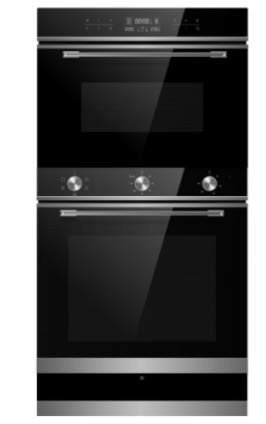What's Holding Back What's Holding Back The Electric Oven & Hob Industry?

Understanding Electric Ovens and Hobs: Your Guide to Cooking Efficiency
Electric ovens and hobs have changed the cooking landscape, using home cooks and expert chefs a trustworthy, effective, and constant way to prepare meals. As technological improvements continue to influence appliance style, the performance and functionality of electric cooking systems have actually considerably enhanced. Cooker Hob And Oven explores the features, advantages, and factors to consider surrounding electric ovens and hobs, providing a detailed introduction for anybody seeking to update or invest in kitchen appliances.
What Are Electric Ovens and Hobs?
Electric ovens are kitchen home appliances developed for baking, broiling, roasting, and other cooking methods that need regulated heat. They make use of electric coils or convected heat components to create and keep the wanted temperature. Electric hobs, often described as electric cooktops, are flat surfaces with heating elements that permit pots and pans to be put directly on them for cooking.
Table 1: Key Differences Between Electric Ovens and Hobs
| Feature | Electric Oven | Electric Hob |
|---|---|---|
| Main Function | Baking, roasting, broiling | Heating pots and pans for cooking |
| Heating Method | Electric coils or glowing aspects | Induction, radiant, or ceramic aspects |
| Operation Temperature Range | Approximately 500 ° F (260 ° C | ) Varies by design; generally lower than ovens |
| Cooking Styles | Versatile; appropriate for numerous meals | Mainly stovetop cooking methods |
| Area Requirement | Normally built into cabinets | Often standalone or integrated alternatives |
| Energy Consumption | Usually greater, depending on use | More energy-efficient with induction hobs |
Benefits of Electric Ovens and Hobs
When thinking about electric ovens and hobs, it's necessary to comprehend their many advantages, which can improve the cooking experience.
1. Consistent Heating
Electric ovens and hobs supply even and consistent heating, which is vital for many cooking methods. This makes sure that dishes cook evenly, lowering the chances of overcooking or undercooking particular areas of food.
2. Security Features
Modern electric ovens and hobs come equipped with numerous safety functions to prevent accidents in the kitchen. For instance, many designs consist of automatic shut-off functions, hot surface indicators, and child safety locks.
3. Easy to Use
Unlike gas designs, electric ovens and hobs are uncomplicated and easy to use. The simpleness of turning on a dial or pushing a button makes them available for cooks of all skill levels.
4. Versatile Cooking Options
With various cooking approaches possible, from baking to simmering, electric designs are versatile adequate to accommodate a large range of cooking styles and choices.
5. Cleaning and Maintenance
Electric ovens typically include smooth surfaces that are simple to clean, especially models with self-cleaning abilities. Hobs, especially induction types, also offer a flat surface area that is simple to wipe down, making maintenance a breeze.
Popular Types of Electric Ovens:
- Conventional Ovens: Ideal for standard baking and roasting.
- Convection Ovens: Circulate hot air for much faster, even cooking.
- Microwave Ovens: Use electromagnetic radiation for quick heating and cooking.
- Toaster: Small countertop ovens for fast jobs.
Popular Types of Electric Hobs:
- Induction Hobs: Utilize magnetic fields for fast heating and energy efficiency.
- Radiant Hobs: Feature electric coils that warm up to cook food.
- Ceramic Hobs: Offer a smooth surface area and are easy to tidy.
Considerations When Choosing Electric Ovens and Hobs
While electric ovens and hobs provide many benefits, a number of aspects should be considered to make sure the best fit for your kitchen:
1. Space Availability
Evaluate the available kitchen area before buying. Identify whether Electric Oven & Hob need an integrated model or a freestanding appliance, and measure the dimensions thoroughly to guarantee an excellent fit.
2. Cooking Needs
Identify your cooking routines and choices. If you routinely bake big amounts or cook complex meals, consider an oven with advanced functions like convection settings or multiple racks.
3. Energy Efficiency
Try to find energy-efficient designs that can assist in saving on utility costs over time. Energy Star-rated devices can be particularly cost-effective.
4. Spending plan
Set a practical spending plan that represents both the initial purchase and continuous operating costs. In addition to the device cost, consider installation and possible repairs.
5. Extra Features
Consider whether functions like clever technology, programmable settings, or steam cooking alternatives are very important for your cooking design.
Frequently asked question Section
Q: How do I tidy my electric oven?
A: Most electric ovens featured self-cleaning alternatives. If your design does not have this function, permit the oven to cool, then clean down surfaces with a mix of baking soda and water or a business oven cleaner.
Q: Is induction cooking safe?
A: Yes, induction cooking is considered safe as the heating component just triggers when compatible cookware is in contact with it, minimizing the danger of burns.
Q: How long does it take for an electric oven to pre-heat?
A: Preheating times vary based upon the oven's design and temperature level setting but normally range from 10 to 15 minutes.
Q: Can I use any cookware on an induction hob?
A: No, only ferromagnetic pots and pans works with induction hobs. Look for induction compatibility before use to avoid damage.
Q: What is the difference in between a convection oven and a standard electric oven?
A: A stove includes a fan that distributes hot air, making sure even cooking and reduced cooking times compared to a conventional electric oven, which does not have this function.
Electric ovens and hobs supply a modern-day option to numerous cooking needs, providing performance and dependability in the kitchen. As consumers evaluate their choices, comprehending the functions, types, and considerations will enable them to make educated decisions. Whether one is an occasional cook or a cooking enthusiast, electric appliances can boost the general cooking experience, bringing benefit and imagination to the table.

